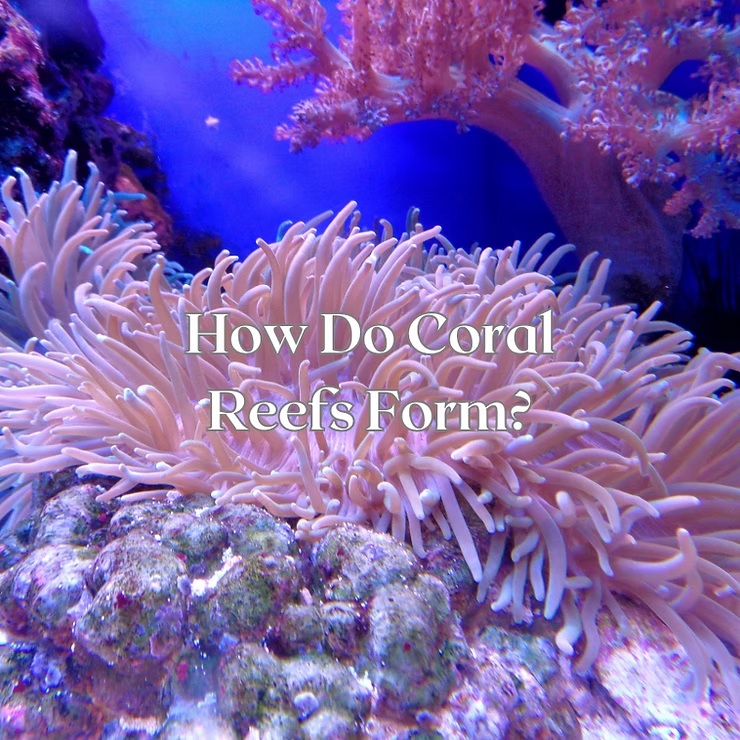Introduction
Coral reefs are diverse and vibrant underwater ecosystems that play a crucial role in marine life. Formed over thousands of years from the accumulation of coral skeletons, they provide habitats, protect coastlines, and contribute significantly to global economies through fishing and tourism. Understanding their formation and importance is essential for conservation and long-term survival.
What Are Coral Reefs?
Coral reefs are built by colonies of coral polyps, tiny animals that secrete calcium carbonate to create hard structures. These reefs house countless species, acting as underwater cities full of activity. Beyond supporting biodiversity, they serve as natural barriers, reducing wave energy and protecting coastlines from erosion and storm damage.
Types of Coral Reefs
- Fringing Reefs: Grow directly from shorelines, often around volcanic islands or continental shelves.
- Barrier Reefs: Found farther from shore, separated by lagoons.
- Atolls: Circular reefs surrounding lagoons, usually built on submerged volcanoes.
- Patch Reefs: Small, isolated reefs often within lagoons or deeper waters.
How Do Coral Reefs Form?
The Role of Coral Polyps
Coral polyps are the architects of reefs. Through a symbiotic relationship with algae called zooxanthellae, they gain energy to build calcium carbonate skeletons. As polyps reproduce both sexually and asexually, they expand reefs into vast, intricate ecosystems. Some corals can live for centuries, contributing to reef stability.
Formation Process
- Colonization: Polyps attach to hard surfaces like rocks.
- Growth: Colonies expand, forming complex structures.
- Accretion: Reefs strengthen as polyps deposit calcium carbonate.
- Biodiversity: Growing reefs attract fish, crustaceans, and other marine life.
Where Are Coral Reefs Found?
Tropical Waters
Most reefs thrive in warm, sunlit tropical waters, such as the Great Barrier Reef. They cover less than 1% of the ocean floor yet support more than 25% of marine species.
Cold Waters
Some reefs also exist in colder, deeper waters. These do not rely on algae but instead feed on plankton. While less common, they are equally vulnerable to ocean acidification and human impacts.
Unique Locations
- The Great Barrier Reef in Australia, the largest reef system on Earth.
- The Red Sea, famous for vibrant coral formations.
- The Flower Garden Banks in the Gulf of Mexico.
- The Maldives, a paradise of coral atolls and marine biodiversity.
What Threatens Coral Reefs?
Climate Change and Coral Bleaching
Rising ocean temperatures cause coral bleaching, where corals expel algae, lose color, and become vulnerable to disease. Prolonged bleaching often leads to coral death.
Ocean Acidification
As oceans absorb excess carbon dioxide, acidity increases, making it harder for corals to build skeletons. This weakens reefs and affects other marine organisms dependent on calcium carbonate.
Overfishing and Destructive Practices
Overfishing disrupts reef ecosystems, while destructive methods like dynamite fishing physically damage corals. Both threaten reef survival and the livelihoods of coastal communities.
Protecting Coral Reefs
Reducing Carbon Emissions
Shifting to renewable energy, sustainable transport, and climate policies is critical to slow warming and acidification.
Promoting Sustainable Fishing
- Implementing catch limits and marine protected areas.
- Using selective fishing gear to reduce bycatch.
- Supporting local communities with education and alternative livelihoods.
Conservation and Restoration
Marine protected areas and coral gardening programs help reefs recover. Public awareness and education also inspire collective action, making small contributions add up to meaningful impact.
Conclusion
Coral reefs are remarkable ecosystems shaped over millennia. They support marine life, protect coastlines, and sustain human communities. Protecting them requires urgent action against climate change, overfishing, and destructive practices. By valuing reefs today, we ensure their survival for generations to come.

